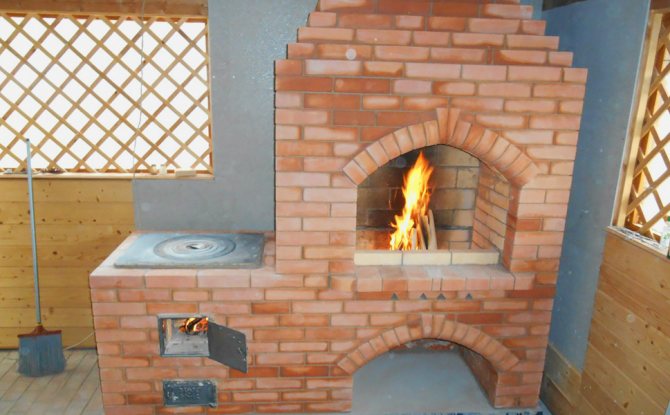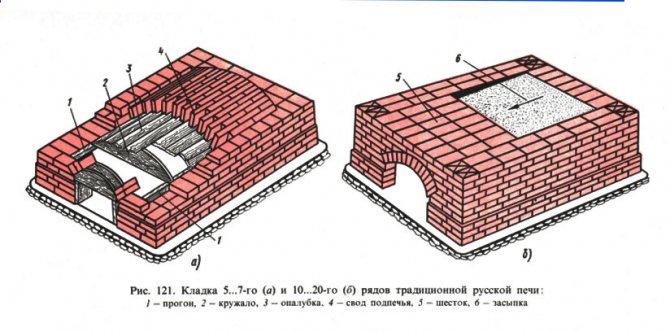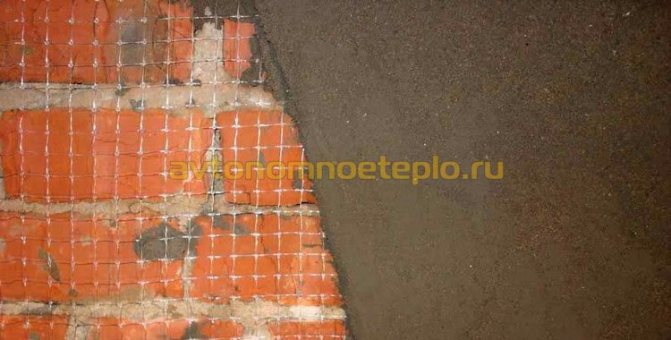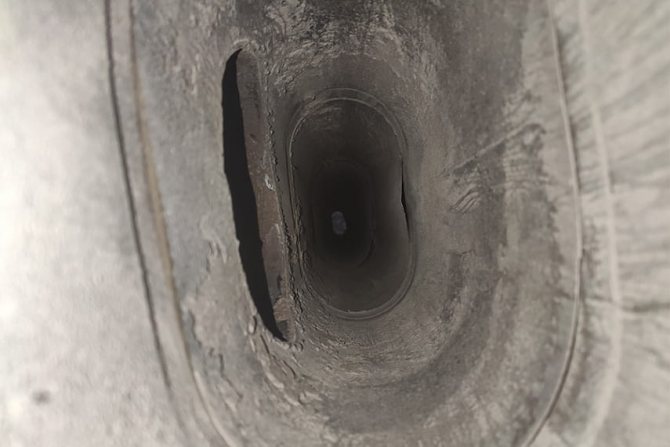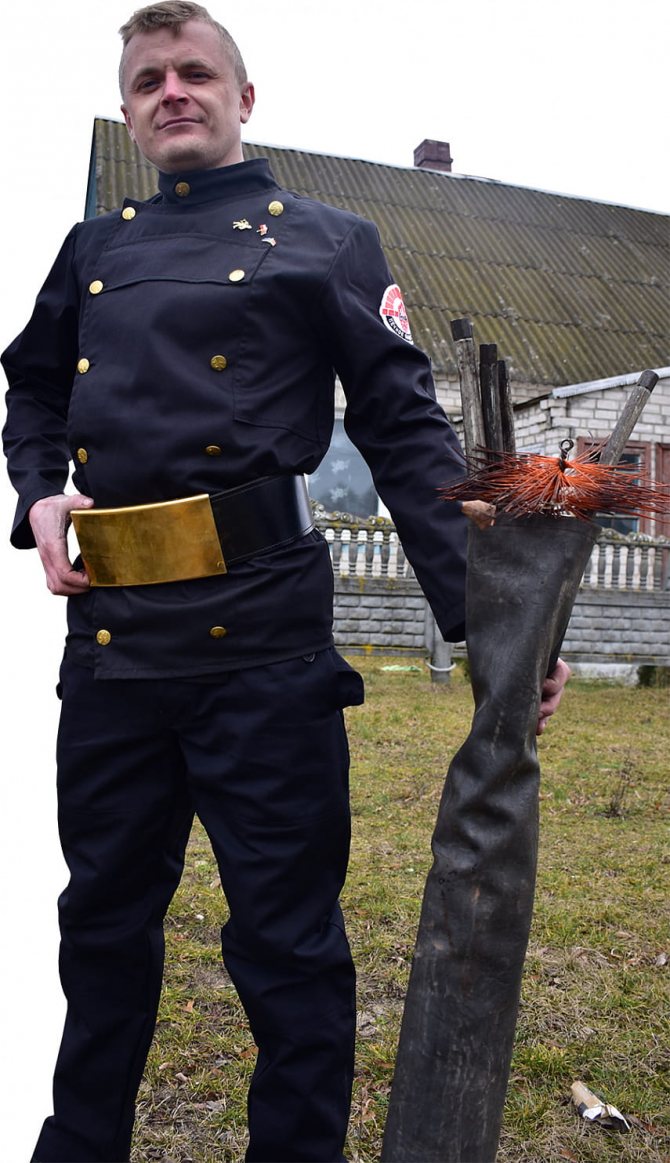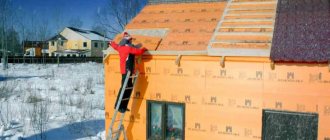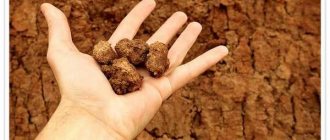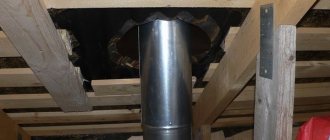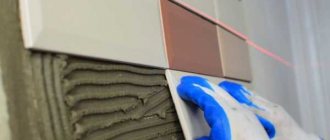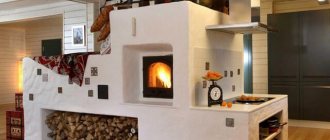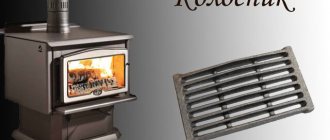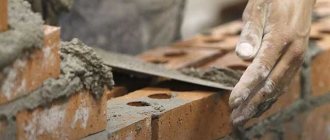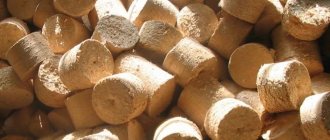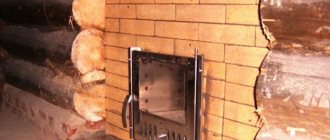When can the stove be heated after laying?
In the process of drying the stove, two main stages can be distinguished:
- Natural drying of the oven after laying within 5 - 7 days. At this time, it is strictly forbidden to heat it with wood, since the main drainage of moisture from the structure occurs.
- Drying by heating, lasts from 7 to 14 days, depending on the intensity and number of fires in the oven.
In total, the whole process from laying the last brick to complete drying and full use of the stove takes about 2 - 3 weeks.
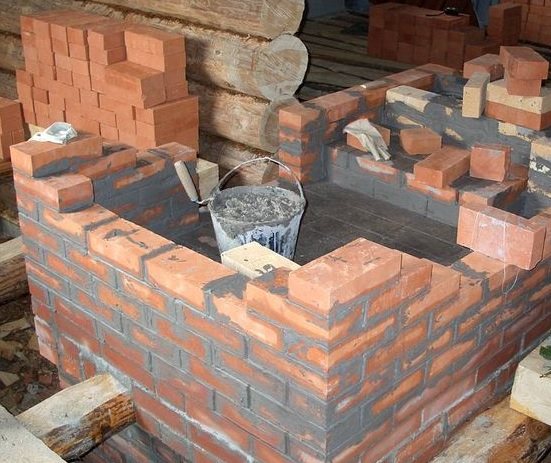
The whole drying process takes about 2-3 weeks (depending on weather conditions)
Drying recommendations


Diy brickwork scheme.
It is necessary to start drying the ovens immediately after laying, if you slow down for several days, this can lead to negative consequences. The first stage of drying usually lasts 3-4 days, while the firebox is carried out in small portions of firewood (small firewood should be used), more than 2 kg cannot be thrown into one firebox. It is very important to use wood with a moisture content of no more than 15%, it is also good if the wood is deciduous. The firewood must burn for at least an hour. The heating can be carried out up to 3 times a day.
When kindling is carried out, it is not recommended to use flammable and flammable materials. At the same time, kindling is carried out faster, but one should not forget that the main purpose is drying, and for this such means are not suitable, therefore, it is necessary to use chips, clean dry newspapers, small dry firewood, you can use a torch. After a steady combustion has formed, firewood can be added, but only in small portions. Do not use a large amount of newspapers, cardboard and wood chips when lighting up. The fact is that this can lead to overly intense combustion, which can result from local overheating of the firebox and channel walls, all this can lead to the destruction of the masonry.
If the oven was dried for 3-4 days, its duration should be increased to one and a half hours, the portion of firewood should also be larger - up to 2.5 kg, while the wood is used the same as in the previous stages.


The location of the chimney above the roof (dimensions are given in m).
The second stage of drying is carried out until the formation of condensation, which forms on the surfaces of doors and valves, stops. In most cases, this takes 6 to 10 days. During the first two stages, the blower door must always be in a slightly open position. As for the duration of the third stage of drying, it usually lasts 5 days, the frequency is the same, but the amount of firewood must be increased to 3.5 kg for one furnace, while the blower door must be closed.
When the ovens are dried, the intensity of combustion must be monitored: if there is a significant increase in temperature in the area of the combustion chamber, then all regulation is carried out by opening and closing the combustion and blower doors. If the ovens dry in the summer, then it usually takes no more than a few days, in cold weather it will take 20-30 days.
It should be borne in mind that if the oven heats up very much, and at the same time it is not dried properly, then this can lead to the destruction of the oven.
Why is it forbidden to heat an undried oven?
A large amount of moisture contained in the structure, when heated, can lead to deformation of the masonry, up to the loss of individual elements, as well as cracking of bricks and cement mixture. This will nullify all the efforts of the stove-maker, the stove will need to be re-arranged in a new way.


Possible cracks
Even after the repair of the stove, with improper heating and drying, carbon monoxide can penetrate into the living space.Moisture will again be to blame, which, with intense evaporation, forms microscopic channels and cracks, through which dangerous carbon monoxide and smoke will enter the dwelling.
How long does it take to heat a brick stove?
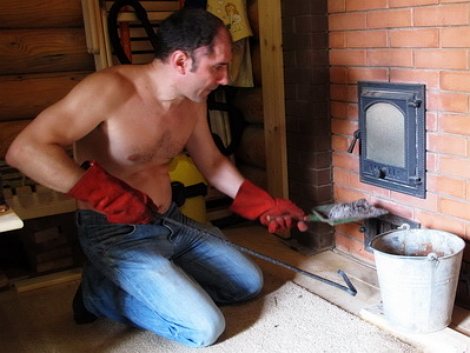

Determining the length of time it will take to heat a device is fairly easy. After the completion of the process, the overall oven temperature should be within 70-80 degrees. In some cases, indicators up to 90 degrees are allowed. If the firebox lasts longer, an unpleasant odor will appear in the room. Therefore, in order to avoid the appearance of harsh odors in the room and the destruction of the structure, the front of the stove is cleaned before the start of the heating season.
The average duration of a brick oven is 1-1.5 hours.
How can you speed up the drying process?
It is better not to force the natural drying process, the stove should give maximum moisture naturally.
But, there are some tricks that increase the evaporation of water from the structure:
- It is recommended to use a fan heater by directing the air flow into the combustion chamber.
- It is possible to use a powerful incandescent lamp of 200 - 250 watts, it is also placed in the firebox, after which it turns on and slowly heats the air inside all the compartments of the furnace.

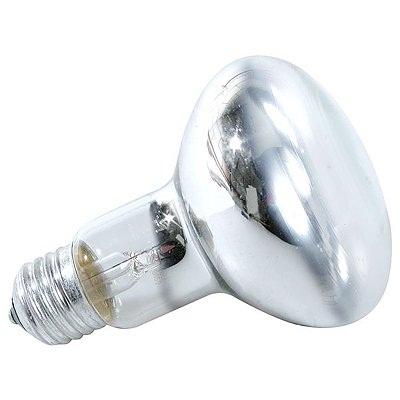
To intensify drying with the help of heating, the furnace is fired up 3-4 times a day, putting a small amount of fast-burning firewood.
It is important that the exhaust dampers are half open and that the access of fresh air to the combustion center is closed. After the firewood has completely burned out, close the dampers and open the stove door. You can completely dry the oven after laying it after 5 - 7 days of such procedures.
Natural drying
If you give the constructed structure enough time, then nothing will happen and moisture from the material will not be able to leave. This will be facilitated by the natural humidity of the environment. Therefore, the oven is dried before being put into operation.
Drying the oven is a whole complex of measures aimed at ensuring that moisture in the form of steam evaporates through the channels made, and this process should proceed gradually, without harming the masonry.
Natural drying is exactly the state when the oven is left to itself. She stands with open channels for about 5 days. During this time, the evaporated liquid (evaporation occurs at any temperature) is set in motion due to the draft in the chimney. Naturally, in the warm season, such a process will be more effective than in the cold, but it will not be possible to completely dry the stove in the described way, because moisture will leave only from the surface layers of the masonry.
Good to know: How can you paint a red brick stove, what composition to use
To remove moisture from deeper layers, it is necessary to gradually increase the temperature of the material, and any intervention can no longer be called a natural process, therefore drying a new device also implies a forced stage.
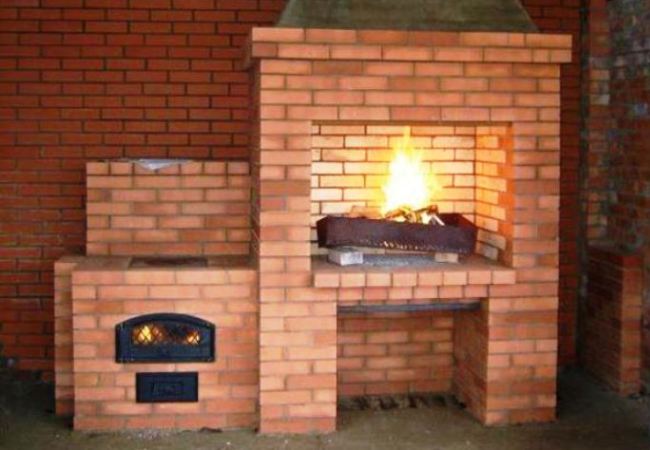

First kindling
Signs that the stove can be stoked
The main indicator that the stove is completely dry is the absence of condensed moisture on the stove doors and the main valve after 3 - 4 hours after all stove dampers and doors are completely closed.
There is another Siberian way to find out if the oven is completely dry:
- To do this, open all windows in the room, as well as all doors and dampers in the oven.
- Then put a bucket of water by the stove.
- As soon as it completely evaporates, the oven is ready for full operation.
And the last way to finally make sure that the brick structure is completely dry is control kindling after the completion of forced drying.
After such kindling and wood burning, all dampers should be closed and the condition of the seams should be monitored.If no serious cracks have formed on them within 3 - 5 hours, then the oven is completely ready for full use.
How should a newly built oven be dried?
It is recommended to dry the oven gradually. The most effective way to prepare the furnace for subsequent operation will be consistent natural and forced drying.
Natural drying
The natural drying of a newly built kiln should take about 5 days. For the effective flow of this process, it is necessary to fully open the doors and valves in the furnace, which will allow air flows to circulate freely through all channels. The draft arising in the chimneys and channels of the furnace will force the air passing through the internal channels of the structure to capture the moisture present here and remove it through the pipe into the atmosphere. With natural drying, only moisture is removed from the masonry surface. To increase the efficiency of natural drying, experts recommend placing a 200 W electric incandescent lamp inside the firebox and turning it on. At the same time, a fan heater should be installed in front of the firebox door and the air flows emanating from it should be directed into the furnace cavity. Consider. In order to dry the oven as efficiently as possible, using the natural drying method alone is not enough. After natural drying has been completed, it is imperative that the user of the oven perform forced drying.
Sequence of operations for forced drying
During forced drying in the furnace of a newly built furnace, it is necessary to burn dry firewood according to a certain technology. Forced drying occurs as a result of daily burning of finely chopped wood logs in the firebox, the width of which does not exceed 3-4 cm.
Before lighting a fire in the firebox, you must do the following:
- slightly open the blower;
- open the main valve halfway;
- Close the doors regulating the secondary air supply and do not open them in the future.
Upon completion of the first forced drying, when the firewood placed in the oven has completely burned out, the following operations must be performed sequentially:
- slightly open the blower door, approximately 0.5-1 cm;
- close the main valve, leaving a small gap, the size of which will lie in the range from 1 to 2 cm (this gap is necessary for the humidified air to exit);
- leave the doors of the secondary air supply door in the slightly open position.
After the first firebox is completed, after 4-6 hours after its end, all doors and stove valves, except for the stove door, should be opened completely. It is necessary to pay special attention to the fact that during the entire drying process of the oven in forced mode, the heater door must be in the closed position. The oven is dried in forced mode once a day for 7-10 calendar days. During the first firebox, the stove should be heated with two kilograms of dry firewood, in the future, every two days, the initial rate should be increased by 1 kg. If the process takes place in winter, the forced drying of the oven should be carried out for 2-3 weeks. Do not burn more than 7 kg during each firebox. Drying of the oven in forced mode continues until drops of condensate no longer appear on the closed doors and the main valve of the oven that has been standing for 3-4 hours.
How to properly heat a new brick oven?
The first firebox of a new brick oven begins with checking the presence of draft, for this it is enough to bring a lighted match to the chimney, all the dampers must be open.
Then follows:
- Make sure that there is no condensation on the doors and internal bricks;
- Make sure that there are no serious cracks in the dried solution, thread-like breaks are allowed;

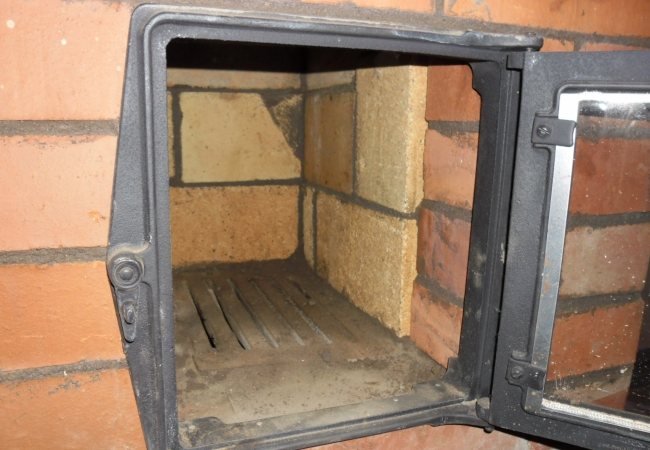
- Put wood in the firebox for 2/3 of its volume. To ignite the stove with paper and wood chips, the use of gasoline and other flammable liquids is strictly prohibited;
- After the firewood has completely burned out, wait 15 - 20 minutes and close the exhaust flap.

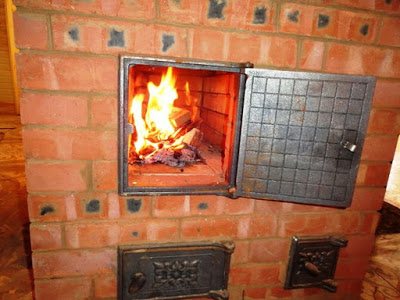
How to dry the oven
Natural drying
During this period, the oven is left with open channels for air circulation inside it. Due to the draft, the presence of which must first be checked, moisture will be removed through the chimney. Sometimes, in order to speed up the drying process, kiln craftsmen place a burning light bulb in the firebox or place a fan heater with a stream of warm air directed inside the furnace in front of the fire door.
The natural drying process is more effective in the warm season, but even under such conditions this is not the final stage, since even with a prolonged stoppage of the oven, the liquid from the deep layers will not completely leave due to the humidity of the environment. To complete drying, another stage is carried out.
Forced
During this stage, the temperature rises throughout the entire volume of the furnace. This can only be done by burning fuel, but the process requires caution and adherence to a certain order, otherwise the structure of the solution may rupture. Only flat dry deciduous firewood with a width of no more than 4 cm is used as fuel.
Forced drying algorithm:
- Open the air blower door a centimeter gap.
- Open the chimney damper halfway to block the flow.
- Close other doors.
After the wood is completely burnt out, the main valve and the secondary feed doors are closed to one centimeter. An identical procedure is carried out throughout the entire forced drying phase every day. The weight of firewood is constantly increasing by one kilogram, initially no more than two kilograms are laid. This will dry out any remaining moisture in the pores of the solution.
The degree of drying can be determined by the amount of condensate on the furnace door - its absence means that the furnace is ready for operation.
Security measures
Brick stoves require careful maintenance and mandatory compliance with safety rules when working with them. It is imperative to remember that carbon monoxide is a dangerous and invisible killer, therefore, special attention should be paid to ventilation and sealing of cement joints when using such devices.
Do not immediately close the chimney damper to avoid carbon monoxide poisoning. Before kindling, it is imperative to check the presence of draft and regularly clean the chimney from soot, and the ash chamber from wood combustion products.
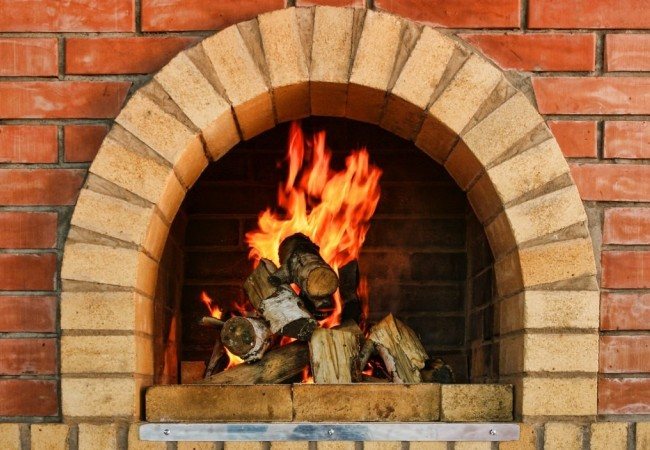

Safety regulations
During the implementation of this entire process, it is necessary to comply with safety regulations. Before starting firing, you need to check the draft, then you need to make sure that all the views and valves on the chimney are open. In the space above the view, you need to burn a dry newspaper, this is done in order to "drive out" the cold and humid air. If there is no thrust, then operation is unacceptable.
It is forbidden to store firewood in the immediate vicinity of the stove, the amount of which exceeds the volume for one firebox. It is forbidden to fill the combustion chamber with more than 2/3 of wood with firewood; when lighting it, it is also forbidden to use fuel for which the stove is not designed. You cannot add firewood with kicks and throws. It is not necessary to accumulate coals in the combustion chamber, especially since they should not be allowed to fall out. It is not allowed to open the air flow regulator completely, only intensive combustion can be allowed.
In a strong hurricane wind, it is impossible to dry the stove by means of a firebox, and a continuous firebox exceeding 3 hours is also prohibited.
Drying steps
It is not recommended to heat the stove in the first 6-7 days after laying.It is necessary to create maximum traction inside, which is achieved by full opening of all valves, views and doors. In this case, by means of increased air circulation, drying of the surface words of the clay solution is achieved. You can try to increase ventilation by directing an electric fan into the firebox and placing a high-power electric lamp in it.
After setting the upper layer of the solution, you can proceed to the next stage - forced drying. For this, finely chopped dry firewood is used. They need to be laid out in the firebox and set on fire, then cover the blower, thereby reducing the supply of fresh air. It is enough to leave a gap of 1-1.5 cm, the view also needs to be covered by ½ to reduce traction. In this way, a slow movement of hot air is achieved, which will contribute to high-quality and deep drying of the masonry. After 6-7 hours, the doors and latches must be fully opened and the oven left in this position for a day. In the next 4-5 days, you need to repeat the furnace every day, but the volume of firewood must be small (2-3 logs) so that the masonry dries out gradually.
How to dry a new masonry oven and avoid mistakes when firing up for the first time?
Despite the beauty and efficiency of modern metal fireplaces, many people still prefer a brick hearth. But not everyone knows that immediately after construction it cannot be drowned in full force. Gentle, slow drying is necessary, and there are strict rules on this.
Any brick structure, including a fireplace, after masonry is saturated with moisture from the solution, and with sharp heating, the masonry can simply break. But that is not all. Rapid evaporation of water will lead to the fact that the glue dries, losing its strength properties, and turning, in fact, into a compressed powder. So the fireplace can simply fall apart.
The easiest way is to dry the masonry in a natural way, leaving the oven in a room with open windows for 10-15 days. In this case, all doors and cleaning holes of the oven must also be open. The process is considered complete when the damp spots disappear on the bricks, and condensate stops settling on the view and valves. After that, you can gradually put the fireplace into operation, melting it with chips and small logs. First, the fire is kindled once or twice a day, then longer and longer, putting more and more large firewood.
The temperature of the outer surface of the fireplace during drying should not exceed 50 ºС, otherwise cracks and even tears may appear on it
You can speed up the drying process by getting started immediately after laying, but you need to proceed with great care. Furnace sessions should not exceed 20-30 minutes. First, paper or shavings are placed in the chimney, then chips and small logs. And only in the last turn they load full-fledged firewood, heating the structure for no more than half an hour. Important!
In this case, the combustion door must be closed, but the smoke channel, on the contrary, is completely open.
After each firebox, all openings in the stove, as well as doors and windows in the room, should be left open so that the evaporating moisture can be removed as quickly as possible. The drying process takes an average of 3 to 10 days, depending on the size of the oven.
The drying efficiency is significantly influenced by the “weather in the house”. It is important that the room where the fireplace is located maintains a stable temperature not lower than + 5 ° С and not higher than + 25 ° С.
It happens that during the drying process, especially in the early stages, the firebox starts to smoke. You shouldn't worry about it - dense, heavy water vapor interferes with the release of volatile combustion products, which is fraught with problems with traction. Do not pour water over smoking firewood - this will only aggravate the situation.You need to wait until the fuel goes out by itself, and then open the windows and doors in order to properly ventilate the room.
It is not recommended to lay firewood with a moisture content of more than 15% both during drying and during operation of the fireplace. It is desirable that the logs are from hardwood
During kindling, do not use combustible mixtures - thanks to them, the flame flares up too quickly and too much, which harms the drying process. It is wiser to use wood chips, splinters or paper.
It is best to dry the oven in late spring, summer, or early fall. In winter, the process can take 20-30 days.
And of course, it is very important to observe safety precautions when drying a fireplace. Before starting the firebox, you need to open all the valves and expel the cold air by burning it into a dry newspaper. If the draft is poor or absent altogether, as evidenced by a weak flame and smoke, then the fireplace cannot be stoked. And under no circumstances should you fill the firebox with wood more than a third.
Control firebox
About 20 kg of logs are thrown into a conventional-sized oven, but not thin branches, but normal firewood. Their combustion is maintained at full power, and after the formation of coals, the doors and dampers are closed. Surfaces are periodically monitored for five hours. Attention is paid to factors such as:
- residual condensation;
- the formation of cracks in the seams;
- split brick;
- skewed doors, etc.
It is possible not to react to the few threadlike cracks for the time being, since this phenomenon in the masonry of the furnace is considered quite predictable and acceptable. Slots two to three millimeters thick will need to be repaired, but not immediately, but after the heating season, i.e. in four to five months. For work, it is recommended to use an elastic mortar mixed with clay with the addition of sand.
In villages, for centuries, ovens were completely coated and whitewashed outside. In modern structures, the masonry surface is often left open, therefore, they try to prevent the appearance of cracks by all means, using special, heat-resistant bricks. They also mount decorative and protective fences, which, in fact, is not rational. Under normal conditions, the stove walls continue to smear from time to time, getting rid by any means of negative phenomena that have appeared, including from incorrectly drying the stove after the end of its laying.

